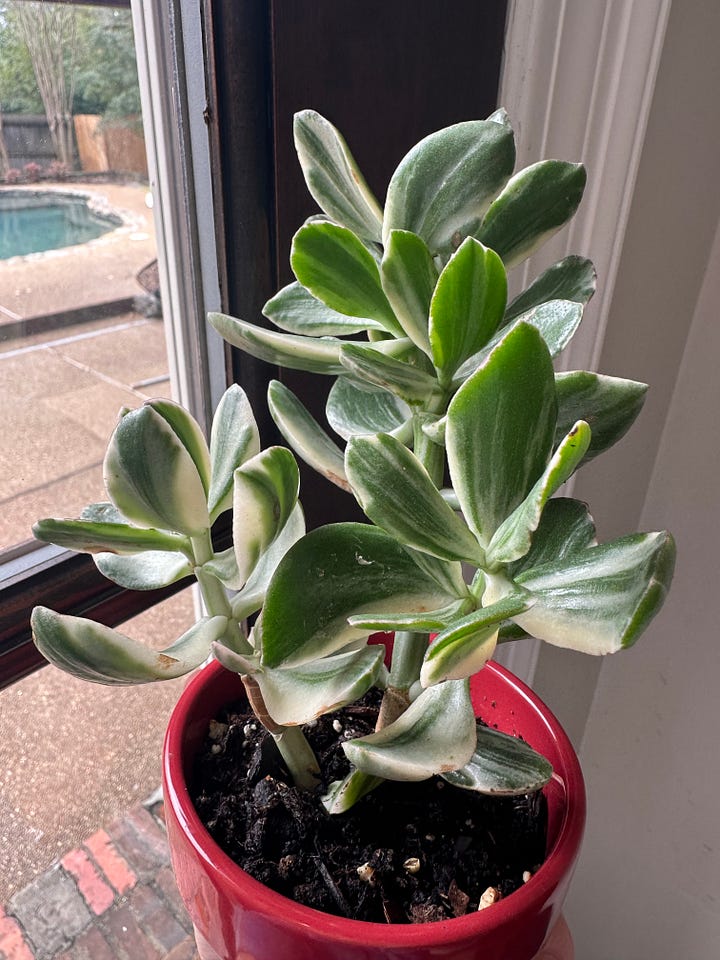Current Mood
(image from Pixabay under free-use guidelines, original photo by Pixel-mixer)
There is so much going on that I could have filled this month’s newsletter with at least twice as many items. Several items were bounced to next month, but I also added a brief essay to the intro, so bear with me!
Personally, I’m vacillating between chill vibes (they’re chaos monkeys, just wait things out) and depressive doom (they’re going to destroy everything and it will take a generation to fix the mess). Putting aside the fact that we’re very excited about our federally-funded projects, their likely demise means several of us are about to take a big financial hit (and my heartfelt condolences to friends and colleagues who have lost their jobs due to the current madness).
I have many opinions about the current situation, some of which I share in a few different spots below. This Andy Rotherham piece really resonated with me (scroll down to the section, “The Sacking of DC”). Andy is one of the best thinkers on U.S. education, a center-left moderate with bipartisan bona fides. His (clearly frustrated) take helped me process some of my own thoughts.
Indeed, Andy turning the magnifying glass on his own side runs parallel to some of my thinking lately. One question that I keep asking myself as I see the rash actions being taken at the federal level: Should we have engaged more with fringe ideas?
The actions are rash because even the decision makers haven’t thought through the implications (see David Brooks’ excellent column on this point). Many of these actions have been quickly followed by corrections or “whoops” press releases when the impact becomes known.
For example, in the mass firings over the past few days, Dept of Energy staff who oversee nuclear weapons were among those let go. Many were rehired after the Administration realized the error, but the fact that they were reportedly unaware that DOE oversees nukes is unforgivable, especially since they made the same mistake in 2017.
But here’s the thing: Anyone with experience in the areas in question would have cautioned the Admin on the obvious consequences of their actions. And a tiny piece of me - just a tiny piece! - thinks we’re a tiny bit to blame - just a tiny bit!
Hear me out: One reason these folks are unaware of the predictable consequences of their actions is that we rarely engage with their fringe ideas. I didn’t read most of Project 2025, although I did watch a few of the accompanying videos that focused on education policy. Like many super-fringy ideas on the far right and far left, they came across asa kernel of a good point extended to a ridiculous degree. That many of the authors of these ideas are people you’d avoid at a party further pushed me (and many others) even further from engaging on the ideas. To paraphrase Logan Roy, “These are not serious people.”
But sometimes unserious people luck their way into serious power, and I knew the odds of that happening were at least 50-50 this time around. Putting aside then-candidate Trump’s assurances that he had never heard of Project 2025 (ahem), it was pretty clear that many of the authors were likely to serve in a second administration.
Now they’re in positions of power and influence, they are emboldened by a lack of concern for constitutional restraints, and they are implementing ideas that have rarely been war-gamed. And the war-gaming is critically important. One reason why I respect colleagues at AEI, Fordham, Brookings, Aspen, and other think tanks across the ideological spectrum is that they will engage in spirited debate - and they do it in large part because it makes their ideas better. Should we have been more assertive in critiquing some of the ideas now being implemented, in the hope of sanding the rough edges and helping the ideas’ originators improve them (and maybe even understand them better?).
I’m really torn about this. On the one hand, I think we really should have pulled the ideas, however wacky, into the light to debate them. On the other hand, people on the far fringes of polite society are not known to love critiques of their ideas, so it probably wouldn’t have made a difference. If all government research grounds to a halt - or, more to the point, H1N1 becomes a lethal pandemic after they’ve fired most of the government researchers who were tracking it - I’ll wonder if we should have pressed harder to pull the fringe ideas into public discourse. Of course, I’ll also continue to wonder if this is all just the result of putting unelected a-holes too close to the levers of power.
That’s enough for now! Let’s get to the interesting stuff below!
As always, I appreciate you sharing this newsletter with friends, along with a recommendation to subscribe. My goal is 1,000 readers/month by the end of the first year, and we’re already almost to 900 just a few months in. And a big thank you to my “five-star” engagement subscribers (yes, Substack measures that!): Nina, Triple P, Ashley, the Steves (F., B., and P.), Tyler, Jake, Rita, Sang, Charlton, Debbie, among many others (you know who you are!). I appreciate the engagement!
Something Short
My colleagues and I published two short pieces since the last newsletter. The first post has some thoughts about how to modify the U.S. visa approach to better support American talent development. H/T to my colleague, Max Eden, who connected me with the Examiner’s editor. A similar set of thoughts appeared soon thereafter in The Hill. Is there momentum behind the idea that talent really matters to the U.S. economy and culture?
The second piece was led by my colleague Annie Connolly-Sporing, who is nearing the end of her studies in the Hopkins education policy master’s program. Annie was the lead author on our recent review of research on gifted students who are homeschooled, and she led the effort to write this short piece on needed research on this topic. H/T to Paul DiPerna, EdChoice’s VP of Research & Innovation, for facilitating this piece.
Something a Bit More Involved
I’m sharing two longer pieces this month, a chapter and a podcast. The chapter was written with my colleague Rafaela Diegoli, the Vice Rector for Academics at Tecnológico de Monterrey, one of Mexico’s top private universities. We wrote about our experiences teaching for transformational creativity in higher education. Rafaela described Tec’s innovative Tec21 model for undergraduate education, and I described a model for teaching creativity that I’ve used at three different universities and helped colleagues implement elsewhere. It was a lot of fun to work with Rafaela to share our visions for working with undergraduates. The chapter appears in a volume on transformational creativity edited by Bob Sternberg at Cornell at Sareh Karami at Mississippi State. I highly recommend the book. Please contact me if you’d like a copy of our chapter.
I was a guest on Anna Stokke’s Chalk and Talk Podcast last year. Anna is a math professor at the Univ of Winnipeg, and we discussed a range of issues related to advanced education. I still get positive feedback about our conversation to this day, several months later, and Anna gets the lion’s share of the credit: She is very knowledgeable about these issues and is a first-rate interviewer. Give it a listen and let us know what you think!
Some Recent Things that Intrigued Me
Government by executive order is a bad thing. The neutering of Congress via executive order is quite dispiriting. Yes, Congress asked for this problem due to its dysfunction, but I’m still shocked at how few reps and senators in both parties have said, “Whoa, hold on a second.” If a president can use an EO to override a law passed by Congress (and signed by a president!), then why do we have a legislative branch? Most frustrating to me is the fact that many of the EOs aren’t well thought out (again, I point to this Brooks piece). If we’re going to abandon the constitutional republic in its 248th year, Congress should at least make the executive branch do it through well-written EOs.
The NAEP Apocalypse. There has been plenty of news about the poor 2024 NAEP scores. I’ll probably write something up on this eventually, after the dust settles from all the hot takes. This podcast is probably the most informed and level-headed discussion of the results, and I’m in agreement with most of the points being made. Spoiler alert: I’m likely to argue that the results (1) aren’t surprising, (2) are generally being overinterpreted (with lots of bad takes), and (3) miss some obvious implications for practice. When I write my piece, I’ll probably argue it’s the phones and social media causing the problem, because measures of adults are showing the same trends. (See also Nat Malkus’ thoughtful report on achievement trends and Robert Pondiscio’s caution to conservatives to focus more on learning and less on the culture wars.)
Forthmann & Doebler paper. AI-scoring of creativity assessments is a hot topic, and for good reason: The major limitation to widespread use of creativity measures is their lack of scalability, and AI is obvious solution this problem. There are many teams working on this, and I follow this R&D work pretty closely. Boris Forthmann and Philipp Doebler just published this paper on the topic. I love the historical perspective and the take-aways, some of which are counter-intuitive, but most of all I like the framing: Let’s take an old, “rediscovered” idea and test it against modern methods. I could go on and on about this paper, it’s that good. It also adheres to open science principles, which is important. Check it out!
Early childhood fade-out paper. One of the most frustrating aspects of education is that many interventions, especially those with young children, show positive effects for a few years then “fade out.” We found this in a federally-funded evaluation of Indiana’s full-day kindergarten program back in the day. It works … then it doesn’t seem to matter much after a few years. There are lots of theories about fade-out, and this new paper suggests it’s caused by peer effects. That’s a new idea and good food for thought. But I suspect it’s more than that - we have some evidence that the effects reappear years later as the students head into college and the workforce, suggesting that perhaps we’re measuring the wrong outcome variables. Whatever the reasons, they are going to be complex, and this paper is a provocative contribution to the discussion.
Jessica Grose columns. Grose is a columnist for the Times, and you can get her columns emailed to you directly. I read a lot of newsletters and columns every day, and the themes get redundant pretty quickly. But Jessica’s takes are almost always unique and provocative.
Marriage and birthrate declines. Lots of chatter lately about birthrate and marriage declines, both in the U.S. and globally. This piece from The Atlantic offers a pretty good take on the situation (it’s paywalled, but if you subscribe to his newsletter you can get around it). Many theories about the causes center on the plight of boys and young men, which hints at potential solutions. This set of issues is going to gain increasing attention from the public and policymakers. See also this graph.
Good overview of school choice policies. Mike Petrilli at the Fordham Institute posted an overview of key school policy provisions. This is the best summary I’ve seen to date - if you’re a policy person, print out the table and keep it handy.
Podcast discussion of AI safety issues. Kara Swisher is moderating a series of tech symposia at Hopkins, and the latest event is now available on one of her podcasts. This is the best discussion I’ve yet heard on the topic of AI safety.
Some Things I Found to be Cool
Streaming spy movies. We’re experiencing a bunch of spy movies and series on Netflix right now. Back in Action, Night Action, The Recruit - it’s a golden age of entertaining spy stuff. The Recruit is my favorite, as it’s less self-serious than Night Action and funnier than Back in Action. I like to have them on while I’m folding laundry, paying bills, etc.
Ground Swell by Edward Hopper. A true masterpiece on display at the National Gallery. It’s displayed in the lower level in a back gallery, so people rarely stumble upon it. But it is stunning to see in person. It’s on the ground floor (really the basement) in Gallery G-6. A breathtaking color palette, and it will make you want to go sailing immediately (I’ve only been once and came shockingly close to running my boss’ sailboat aground. As I remember it, Him: “Would you mind not running into that island?” Me: “Ha ha!” Me (thought bubble): “OH NO, OH NO, OH NO!”).
Nothing to See Here by Kevin Wilson. I was cleaning out some books and came across this novel. It is my favorite fiction book of the past decade, by far the book that I’ve loaned out to people the most. It’s quirky, funny, poignant, and makes you think about what makes a family. Cannot recommend it highly enough! Here’s an interview with the author.
The Accountant 2! One of my favorite movies of all time is The Accountant. You’ve either seen it and understand, or you haven’t and I can’t explain it to you. I was surprised last night to see the trailer for the sequel, which I knew nothing about. I’m nervous because it just can’t be as good as the first one … but maybe it will be? I may even go to the theater to see this when it comes out in the spring.
Roy Clark was a musical genius. While scrolling through my socials, I recently paused for a minute on a clip of Roy Clark playing guitar on The Tonight Show. Now the algorithms serve up a healthy dose of Clark content, which I don’t mind. This gem of him playing on The Odd Couple just popped up a couple days ago, and it’s a nice reminder that he was a very, very talented guy. Look at Randle and Klugman sitting there mesmerized!
Tremors. Shortly after the last newsletter, the world celebrated the 35th anniversary of the movie Tremors. How they got everyone involved to make a silly B-movie like this is beyond me, but thank goodness they did, because it is a masterpiece.
Laugh at AI While You Can … A colleague recommended using AI as a search engine as I struggled to find examples of a specific education policy. Much of the response was unhelpful and quite a bit was wrong, but that’s neither here nor there. I bring it up because I accidentally pressed the image button when entering my query, and after several minutes it produced this beauty:
The image accurately encapsulates AI’s current capabilities. At first glance, it looks good! But then you look closer … the bushel of deformed hands (who do all those hands in the center belong to?), that killer mullet on the left, and - chef’s kiss - the middle schooler casually chatting with his friends … with a baby sticking out of his backpack. Let us laugh at the machines now, while we still can! Silly robots!
Some Things to Consider
I promised a recap of the latest research and policy discussions at the annual International School Reform and School Choice (ISRSC) conference in Florida last month. I lasted one session, went back to my room to rest for a bit, and spent the next 48 hours in bed with a fever and the stomach flu. Believe me, and I cannot emphasize this enough, you do not want a recap of my time in Florida.
I’m disappointed because this is a great conference that is only held in the U.S. every other year. It’s a mix of academics, think tankers, practitioners, true believers, and people who are choice-curious. During my brief visit, I interacted with parents, students, researchers, educators, and a state school board member. We discussed, debated, agreed, disagreed, all in the service of figuring out what works best for students and their families. I’ll do my best to stay healthy at the 2027 conference!
Jade Plant of the Month
Former Sen. Phil Gramm once famously remarked about his guns that, “I own more than I need, but fewer than I want.” Uh, OK. But hey, jade plant enthusiasts (“jadeheads”) tend to own many more than we need, but far fewer than we want. If you want to see a dude pull his wallet out so fast that sparks fly into the air, follow me around a garden center until I stumble across a box of unique jade plants in the clearance section.
This month’s jade is a rare beauty that was discovered at a garden center right after Christmas. It’s a rare, heavily variegated jade, with stunning contrast on its leaves. This would normally go for a lot of $$$ from a specialty grower, but between the post-holiday sale and a Memphis Botanical Garden member’s discount, it only cost $6. STEAL OF THE CENTURY! I went back three days later to grab its two siblings, who were miraculously still there. I’m getting light-headed just thinking about it. While I go sit down for a minute to recover, check out this incredible jade, one of the “Three Musketeers.”


Where to Find Me
http://Amazon.com/author/jonathanplucker
www.linkedin.com/in/jonathanplucker
https://twitter.com/JonathanPlucker
https://www.threads.net/@jonathanplucker
The Team
Editor and Writer: Me
Director of Graphics and Visual Imagery: Matthew Bradford







As usual, thought provoking and lots of room for debate, both on politics and movie choices. On the movie choices, you seem to have an affinity for B films. And I'm not convinced that's a good thing but it is a choice.
As for politics, I am not convinced that we should engage with fringe ideas like Project 2025. The real problem is that we didn't engage effectively on mainstream issues like immigration, the economy and the federal government. It is really frustrating to now hear all of the anti-Trump folks saying how they, for example, really do agree that immigration policies needed to be strengthened, that the price of groceries is too expensive, and the government is wasteful. The problem is that they didn't say that when they were campaigning to beat Trump. Instead, it was all anti-Trump without any content, while Trump was all about content. To reword a well known bromide: it's the content, stupid! (not pointing at you Jonathan, but there are many I am pointing to).
The rest for another day.
Have to say thanks for as always for bringing up interesting ideas to ponder, great research to dive into, and fantastic, sometimes obscure, culture references. The movie recs are always spot on. The AI image was just what I needed this morning as well.